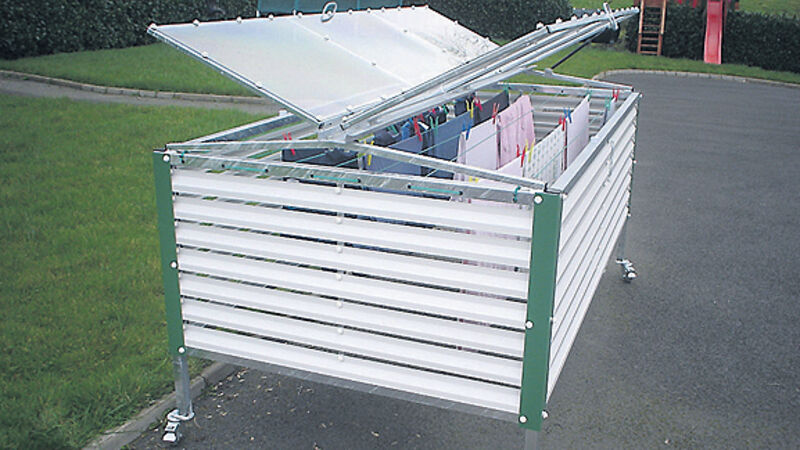High and dry

We can whinge, whine, worry and complain as much as we like, but electricity prices are going up 5%-5.9% this month. Recession is the mother of domestic regression, so it’s time to get that maid back out in the garden pegging out the clothes.
Even with a laudable ‘B’ energy rating, that watt devouring monster the clothes dryer, is an indulgent luxury on a dry, breezy day. Even if you try to get those smalls out there on the weekends, the effort is economically and spiritually worthwhile.
To be honest, budgeting in these ways, I’m not always sure how the savings balance against the bother, but it feels like winning even a small campaign against rising housekeeping bills.
Anyone’s who’s spent a day in chaffing undergarments can confirm that successful line drying is a surprisingly exacting science, so put some time into siting your line and developing a good drying technique.
Quite apart from the vagaries and occasional hardship of going out there into the grim outdoors in November, it’s hard to beat the feel of clothes massaged in a warm mechanical airstream.
There are a few things you can do, to ensure soft clean clothes that won’t be sooty or rasp the skin to bleeding, and to avoid in particular jeans that are so atrophied they can walk back to the closet on their own.
Setting up a conventional line, you obviously want the washing up in the air and preferably bathed in as much light as possible, but it’s the wind, not the sun that really does the work.
If you are lucky enough to have an open-ended porch, outbuilding or covered parking space, they can form an ideal rain-sheltered spot for a pull-out line set on a reel in one or multiple strands.
In a pinched outdoor space, you can create more room on the line for even double sheets, and lift the load up and into the wind with a line-prop. A prop can be fashioned from any long piece of timber with a ‘V’ cut into the end to snag onto the line.
Find a good fixing point that allows the washing to fall back and forth across the prop’s position without dumping it on the ground if the prop fails. Birds can do serious damage to washing, especially at this time of year when darkly coloured berries are plentiful. Guard your white sheets against an autumnal bombing raid and avoid overhanging trees and other perching spots.
If you don’t have a place to fix a line, free-standing kits come from €180 complete with fixed ‘T’ bars to take up to four wash loads. Top of the line, has to be the Irish designed and made Lennon Line in a range of clever louvered frames. Featured on Dragon’s Den, a new 8’x4’ system for even a tiny urban garden has now been introduced for €440 delivery. www.lennonlines.ie.
The firm also offer mobile clothes lines from €290 and a fabulous green house/clothes line that has to be seen to be believed. From €1,590.
Rotary lines are not only dynamic, but useful in small spaces and some models can be easily taken out, or even folded down leaving only the socket in your lawn. In France and Belgium two lines are popular, the lower lines being for smaller items. If you are shy of having your unmentionables flapping in public, the inner section of a loaded rotary line is ideal. Models start at around €25 for a 40m (total line length) three arm dryer without a pole spike. The spike will set you back around €6-€20 depending on make and quality and can be hammered into the ground or set in concrete.
Top of the line in spinning rotaries are four arm dryers with the capacity to take around 60m of washing. They start at around €55 but many come with a complete laundry system including a spike, peg bag, cover and even the pegs.
Wall-mounted fixed frame dryers that fold out like an umbrella for use when needed are another useful spatially clever option, and championed by Brabantia from about €116 (Argos) rising to €135 for an articulated ground set version.
Ensure the line spacing is practical and look out for extra detailing such as a weather cover, easy tensioning and height adjustment.












